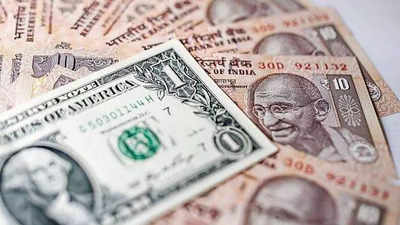[ad_1]
Mumbai: The rupee ended 2024 on a weaker note, depreciating 2.8% against the US dollar to close the year at 85.59, down from Monday’s close of 84.54. This marked the seventh consecutive year of decline for the Indian currency. Dealers attributed the year-end drop to a possible shift in RBI’s forex intervention strategy, which may have allowed a slight correction in the rupee, keeping it among the least depreciated emerging market currencies.
Throughout the year, the US dollar strengthened against most major currencies.It gained 11.1% versus the Japanese yen, 3.1% against the South African rand, 27% versus the Brazilian real, 22% against the Mexican peso, 13.7% versus the Korean won, 4.5% against the Indonesian rupiah, 4.7% versus the Philippine peso, 3.27% against the Singapore dollar, and 6.7% versus the Taiwanese dollar.
The rupee remained relatively stable in the first half of the year, buoyed by capital inflows following the inclusion of Indian bonds in global bond indices. A brief spell of volatility in June, triggered by election results, was short-lived. However, the currency began to weaken in Sept as FPIs adopted a “sell-India-buy-China” strategy, leading to a decline in market indices and additional pressure on the rupee. The victory of US President-elect Donald Trump in Nov led to the dollar gaining against most currencies worldwide.
The most significant depreciation occurred in the fourth quarter, with the rupee weakening 2.2% during this period. On Dec 27, the currency hit an intraday low of 85.81. RBI intervened frequently to stabilise the rupee, drawing down forex reserves, which peaked at $704.9 billion before falling by $60.5 billion by the end of the year.
Foreign portfolio investors pulled $11.7 billion from Indian equities in the fourth quarter, compared to $12 billion in inflows during the first nine months. For 2024, net equity inflows totalled Rs 5,000 crore, a steep drop from Rs 1.71 lakh crore in 2023.
Analysts pointed to structural factors contributing to the rupee’s depreciation, such as inflation differentials between India and the US and India’s persistent current account deficit, driven by its dependence on oil and gold imports. However, the pace of depreciation in the coming year is expected to hinge on the level of capital flows.
[ad_2]
Source link



